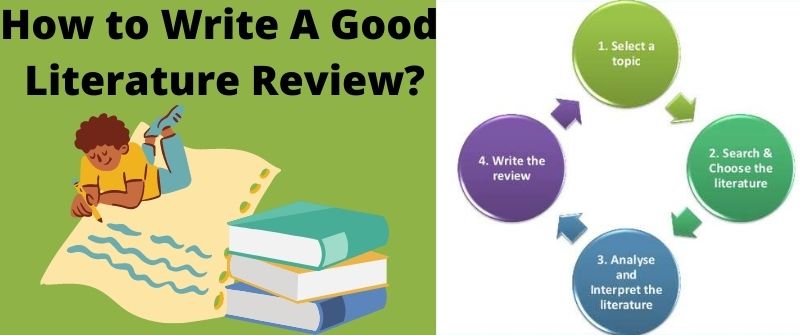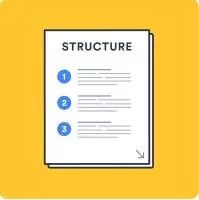Tips on a Good Literature Review: Common Questions Answered

A literature review is a systematic, location, and analysis of documents that are related to the research being connected. This article is a quick guide on how to write a good literature review and answer the common questions asked about the same.
A literature review helps show how familiar you are with the topic and scholarly context, develop the methodology and theoretical framework of your research and show that your research contributes to a debate or addresses a gap.
Seek our help to write your literature review if you want to have such tasks done for you. You can read on if you want to know the steps to do it.
Need Help with your Homework or Essays?
Steps How to write a Good Literature Review
To write a literature review, you need to follow a number of steps so that you will present good points and viable arguments to support your thesis. To do that, consider following these steps.
1. Search for Relevant Literature
Clearly define the topic of the research you are doing and search for material related to your research questions and problems. Prepare a list of keywords that are related to your research question. Include the variables and all the key concepts that you will be interested in.
Use these keywords to search for your sources. Search for journals and articles in different useful databases. You can use the library as well.
Identify the publications of your topic that are important by noting recurring citations. Such authors, books, or articles should be sorted out.
2. Evaluate and Select Sources
Evaluate what has been written about the topic to avoid going through a lot of work that you can’t complete. Key concepts: the problem addressed key theories, results, and conclusions.
It also addresses the relation of the publication to your understanding and the literature of the field, and the strengths and weaknesses of the research should be considered before selecting a publication.

At the same time, the sources you use must be credible.
Recent literature is used mostly in sciences, while historical perspectives are mostly used in humanities.
As you read the literature, take notes that you can use in your literature review.
Record all the citations that you will use to beat plagiarism to make sure you won’t forget.
3. Identify Themes, Gaps, and Debates
For the argument and structure of your literature review to be organized, you will need to understand how the sources you read are connected and related. Always look or:
- Pivotal publications: Studies or influential theories that change the direction of the field.
- Gaps: Anything that is missing from the literature and all the weaknesses that need to be addressed.
- Themes: The concepts and questions that recur along with the literature.
- Trends and patterns: Approaches that become more or less popular over time.
- Debates, contradictions, and conflicts: Sources that disagree. Sources that have different concepts.
The structure of your literature review is seen in this step. It is in this step that you also know the contribution your research will make to the already existing knowledge.
Types of Literature Review Structures
The body of your literature review can be organized using various approaches that you should fully know about before writing:

Chronological
It is the simplest. If you chose it, make sure you avoid listing and summarizing sources.
Patterns, key debates, and turning points should be analyzed to shape the direction of the field.
Interpret in your own words how developments occurred and why.
Thematic
Your literature review should be organized in subsections that address recurring central themes of a topic.
Moreover, each subsection should be handled separately.
Theoretical
Theories, the definition of key terms, and models are discussed. You can use a critical approach to analyze the theories. Read about how a literature review can be critical and know how to apply it.
A theory is the foundation of theoretical frameworks and you can argue the relevance of a theoretical approach that is specific or combine theoretical concepts that create the framework of your research.
Methodological
This involves comparing results and conclusions from different approaches drawn from different fields and disciplines.
Results of qualitative research and those of quantitative research approaches by theoretical scholarship and empirical scholarships and dividing the literature into historical, cultural, and sociological sources are examples of comparisons that can be made.
These strategies can be combined depending on the length of the literature review.
Write the literature review
Like any other academic text, your literature review must have an introduction, a body, and a conclusion.
Get a Brilliant Essay today!
Let our essay writing experts help you get that A in your next essay. Place your order today, and you will enjoy the benefits.
Frequently Asked Questions
Can a literature review be in the first person?
A literature review should not be written in the first person. “I” or “we” should not be used. You are required to use the third person. This includes phrases such as “this paper argues that” and “this paper is in the view that.”
There are, however, some exceptions. Mostly at the postgraduate level, scholars conduct their research and publish their work widely.
This gives them the academic authority that they can use to make claims boldly. In these cases, the use of the first person is acceptable. Phrases such as “I argue” or “I propose” can be used.
Can I use graphs in a literature review?
You can use graphs in writing a literature review to explain and elaborate on something well. Recognizing a logical way to order and link different sections of a review can be done through the use of diagrams and pictures too.
This is not only important at the writing stage but also to the readers of the diagram, which will be shown as a figure in the literature review.
Graphs are also helpful when it comes to the structuring of the text. Read more about using pictures in a literature review to understand how to incorporate them well.
Can a literature review have subheadings?
Literature reviews are structured just like essays. This means that they have an introduction, a body, and a conclusion. Within the body of the literature review just like in standard essays sub-headings are used.
The body provides a detailed discussion of the sources. It is only right that a sub-heading be used to make sure that ideas are arranged properly and flow smoothly to avoid mixing them.
Subheadings also help answer your research question fully. Subheadings or different sections of your literature review help you create a structure that will keep you focused on the subtopics that are relevant in achieving your research aim.
Can a literature review have an appendix?
Literature reviews cannot have an appendix. Appendices should be used when only supporting the background material. Appendices cannot be used for content that does not fit into your word count. This includes your literature review.
Appendices are used mainly in the main body of your research where most of the things are your original work. However, if it is important you can use the appendix on the literature review by referring to it and summarizing the most important information.
Can a literature review include websites as sources?
Materials that are purely informational and historical mostly from websites should not be included in your literature review. Even if information from credible websites including state sites and governmental sites is useful, avoid using it in your literature review.
This information is mainly suitable in the background and introductory part of your research. If it is a must that you include informational and historical data in your literature review, do it sparingly.
Touch on few important parts that if omitted will make your literature review lose its meaning, flow, or readability.
Does a literature review include primary sources?
Literature reviews include information from primary sources. These are the sources that provide first-hand information that is closest to the study issue or object.
Primary sources vary from discipline to discipline. In-depth descriptions, discussions of findings, and original reports detailing methodology found in academic journals are good examples of primary sources in social and natural sciences.
Letters, diaries, speeches, autobiographies, interviews, drawings, social reports, artifacts, photographs, and court records are the most common primary sources of information.
Primary sources are responsible for the emergence of secondary sources which include non-original or second-hand information. Primary research articles are also a primary source of information that include methodology, literature review, the test of measurements, findings, and future research directions

Josh Jasen or JJ as we fondly call him, is a senior academic editor at Grade Bees in charge of the writing department. When not managing complex essays and academic writing tasks, Josh is busy advising students on how to pass assignments. In his spare time, he loves playing football or walking with his dog around the park.




